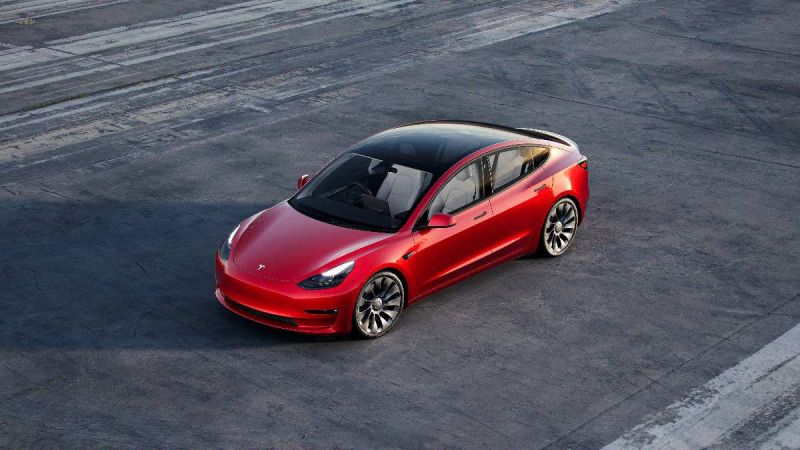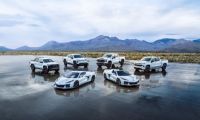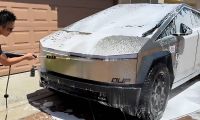Tesla first unveiled the Model 3 back in 2016. At the time, the promise of a mass-market $35,000 Tesla was so compelling people camped out in front of Tesla stores worldwide to be the first ones to reserve the vehicle.
However, after the Model 3 was released, Tesla immediately increased the price of the vehicle bringing the starting price above $40,000.
For years, Tesla critics have pointed to this fact as evidence that the EV maker has failed to meet its stated goal with the Model 3.
However, after endless small product improvements, which included both production efficiency and iterative design changes to the Model 3, Tesla now appears to have not only met the original $35,000 starting price for the Model 3 but, thanks to the Federal EV tax incentive in the US, significantly surpassed the original promise of the Model 3.
Related News: Tesla Restarts 2nd-Gen Roadster Reservation in Multiple Countries Hinting at Production Plans
Yesterday night, Tesla updated the company’s online configurator announcing that all Model 3 variants now qualify for the full $7,500 Federal EV tax incentive. Previous to this announcement, the Model 3 Standard Range and Long Range only qualified for half of the incentive, or $3,750.
The Model 3 Performance on the other hand qualified for the full $7,500 incentive. The reason for this discrepancy was that the Model 3 Performance uses 2170 cells built in Giga Nevada in partnership with Panasonic whereas the Standard Range and Long Range Model 3s use lithium-iron-phosphate (LFP) batteries produced in China in partnership with CATL.
Per the Inflation Reduction Act which stipulates the rules for the $7,500 EV tax incentive, a portion of the incentive is based on the sourcing of critical minerals. And batteries produced in China do not meet the requirements to receive the full tax credit.
Currently, it’s not exactly clear how Tesla was able to get the full tax credit for the Standard Range and Long Range Model 3 with their batteries produced in China. However, the best guess so far is that Tesla has found a loophole.
The Inflation Reduction Act guidelines permit pooling together all Model 3 variants including the Standard Range, Long Range, and Performance; adding together the value of all the critical minerals used in all Model 3 variants sold in the US and if more than 50% percent of the value of the critical minerals is from the US or a country that has a free trade agreement with the US then all Model 3 variants can qualify for the tax credit
It appears that by pooling together the 2170-cell Model 3 Performance with the LFP cell Model 3 Standard Range and Long Range, Tesla was able to clear the 50% value threshold for sourcing critical minerals of the entire Model 3 lineup ergo allowing even the variants with batteries built in China to qualify for the full $7,500 tax credit.
Likely how Tesla is getting full incentive on SR Model 3.
The *average* of battery materials for all Model 3s in U.S. probably now meets mineral requirements @SawyerMerritt @madmanx89 @WR4NYGov @ValueAnalyst1 pic.twitter.com/77U1rkCvKL— Machine (@M_IsForMachine) June 3, 2023
Having said that, no matter the strategy Tesla used to make the Standard Range Model 3 qualify for the full tax credit, what’s not in doubt is that after applying the $7,500 tax credit, the most affordable Model 3 variant now starts at $32,750.
This means an average person in the US can now buy the Model 3 for under $35,000 which allows the vehicle to reach its stated goal. However, even more impressively, since Tesla first unveiled the Model 3 back in 2016, there has been significant inflation that has decreased the value of the dollar.
So in reality, a $32,750 starting price for the Model 3 in 2023 when adjusting for inflation translates to $26,950 in 2016. This means not only has Tesla met its initial goal of bringing a mass-market vehicle with the Model 3 but has significantly exceeded it.
This on its own is wonderful, however, Tesla is also working on a significant refresh to the Model 3 dubbed Project Highland which should improve the production efficiency of the vehicle even more.
And we’ll be sure to keep you posted when Tesla rolls out the Project Highland upgrades to the Model 3. Until then make sure to visit our site torquenews.com/Tesla regularly for the latest updates.
So what do you think? Excited to learn that Tesla has found a loophole to allow all Model 3 variants to receive the full $7,500 incentive? Also, what do you make of the new starting price? Let me know your thoughts in the comments below.
Image: Courtesy of Tesla, Inc.
For more information check out: Tesla and BYD Dominating Global Electric Vehicle Market
Tinsae Aregay has been following Tesla and The evolution of the EV space on a daily basis for several years. He covers everything about Tesla from the cars to Elon Musk, the energy business, and autonomy. Follow Tinsae on Twitter at @TinsaeAregay for daily Tesla news.













Comments
Something more for the
Permalink
Something more for the Honorable Senator Manchin to complain about in the Inflation Reduction Act.
Definitely! but, I do see his
Permalink
In reply to Something more for the by bob ellis (not verified)
Definitely! but, I do see his point. If the US is going to be spending taxpayer dollars to prop up EV adoption then might as well get manufacturing jobs out of it.
Everytime u read a Tesla
Permalink
Everytime u read a Tesla article the batteries and cars are built in different locations. Makes it impossible to maintain vehicles if there is no continuity.